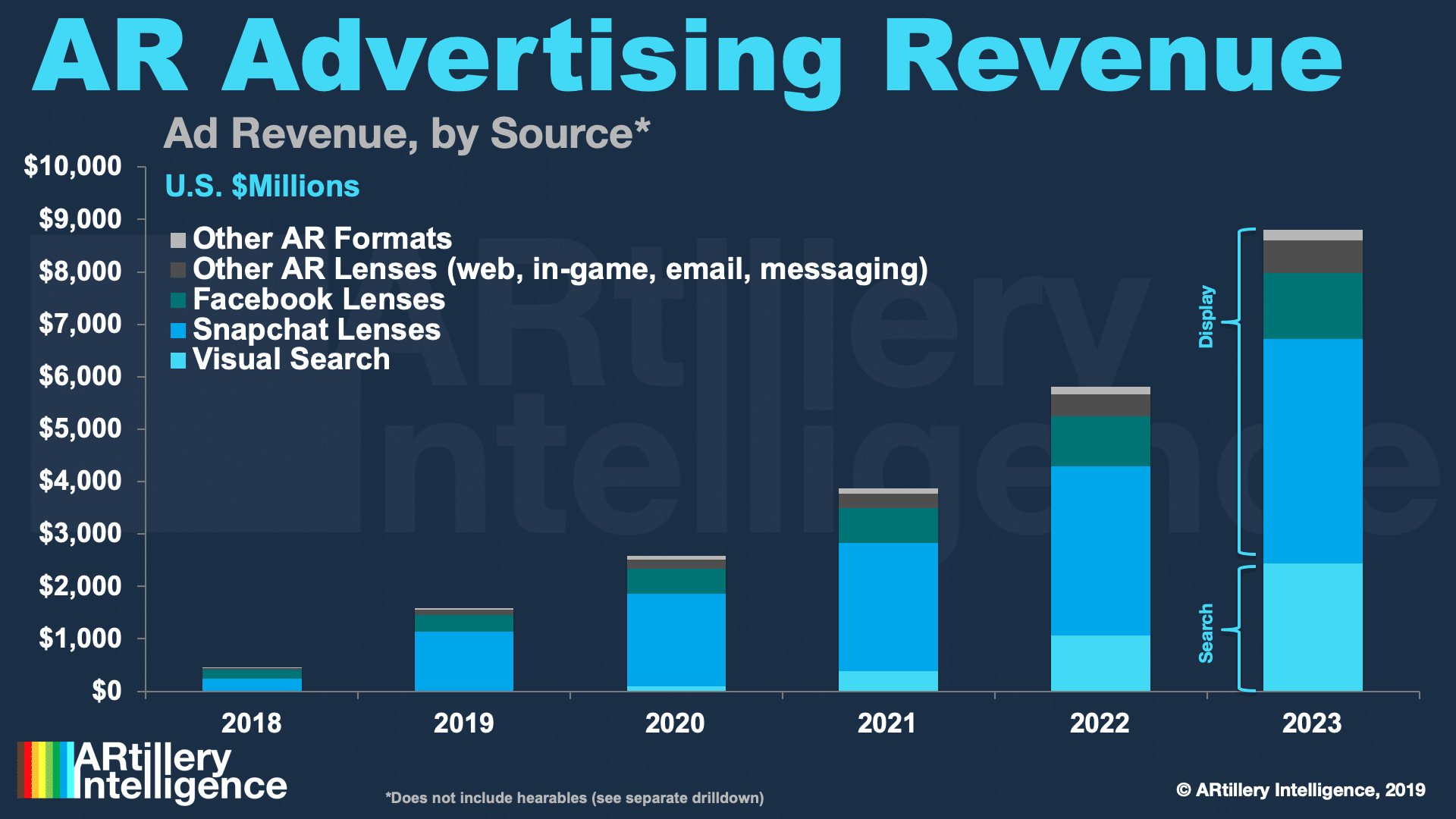
This is the latest in AR Insider’s Campaign Tracker series. Running semi-weekly, it examines marketing campaigns that utilize AR visualization such as product try-ons, and their results. For a full list of campaigns, comparative ROI chart and deeper analysis, subscribe to ARtillery PRO.
Proof points continue to roll out for AR’s effectiveness as an advertising medium. Early-adopter brands are learning that AR lets them demonstrate products in immersive ways. That can include brand engagement (upper-funnel) or “try before you buy” (lower-funnel) visualization.
More evidence from the lower-funnel side of the AR commerce spectrum comes from Papa John’s Valentine’s Day Snapchat lens campaign. Meant to promote its festive heart-shaped pizza in U.S. markets, the front-facing camera activation let users play with heart-themed AR animations.
After doing so, users could then order a pizza directly from the Snapchat app. This resulted in a conversion rate of 25 percent of lens viewers who ordered a pizza. Meanwhile, 60 percent of lens views were from unique users and the campaign led to a 6 percent lift in brand awareness.
Among these figures, the conversion rate is most relevant. There are lots of usage metrics for AR such as depth of user engagement. But the clearest ROI for brand advertisers is direct revenue impact. And a 25 percent conversion rate far exceeds benchmarks in other digital media.

On Your Mark
Another noteworthy component of this campaign is that it could be launched from a Snapcode in addition to the lens carousel. This can be a good way to onboard users to AR, especially for brands that have physical media or store locations with signage that can prompt AR activity.
Snapcodes are technically “marker-based AR” in that a piece of physical media launches the experience. This branch of AR has gotten panned in the current wave of AR excitement for being a primitive form of the technology, compared with spatial mapping and the advent of the AR cloud.
But the pendulum could swing in the other direction as traction for AR continues to linger below desirable levels of mainstream scale. During early stages when most consumers aren’t seeking out AR, prompts like markers and Snapcodes could provide a much-needed nudge.
This also raises one of the detriments of AR-based ad campaigns: Though the engagement and conversion metrics above are favorable, the elephant in the room is that they’re still done at low scale, relative to more established media. Brand advertisers are all about reach and scale.
AR is hitting those marks in isolated high-profile lens campaigns, such as the NFL’s 100th season Snapchat campaign that reached 303 million views. The good news is that these early leaders are at least indicators of the audience reach that’s possible with lens-based campaigns.

Camera-Forward
Besides the NFL’s gravitational pull, one success factor is Snapchat itself. Though its a walled garden, it’s a large and fitting one for AR. Lens sharing is a native and prevalent activity among the camera-forward user base. So it’s become a top AR destination for brand advertisers.
Specifically, Snapchat reports that its sponsored lenses average 10 to 15 seconds of playtime, 19 percentage-point lifts in ad awareness, 6-point lifts in brand awareness and 3.4-point lifts in action intent on average. They also achieve an average 9-point lift in post-engagement product sales.
That realization and adoption by a larger share of brand advertisers will cycle in slowly, just as it did for mobile advertising. Meanwhile, AR ad revenue reached $1.58 billion last year according to our research arm ARtillery Intelligence. But…that’s less than 1 percent of global ad spend.
We’ll be back with more AR commerce proof points and takeaways in our Campaign Tracker series. There will be lots to watch and internalize as AR commerce evolves quickly from early and experimental stages to a more standardized playbook around UX, user targeting, and distribution.
For deeper XR data and intelligence, join ARtillery PRO and subscribe to the free AR Insider Weekly newsletter.
Disclosure: AR Insider has no financial stake in the companies mentioned in this post, nor received payment for its production. Disclosure and ethics policy can be seen here.
